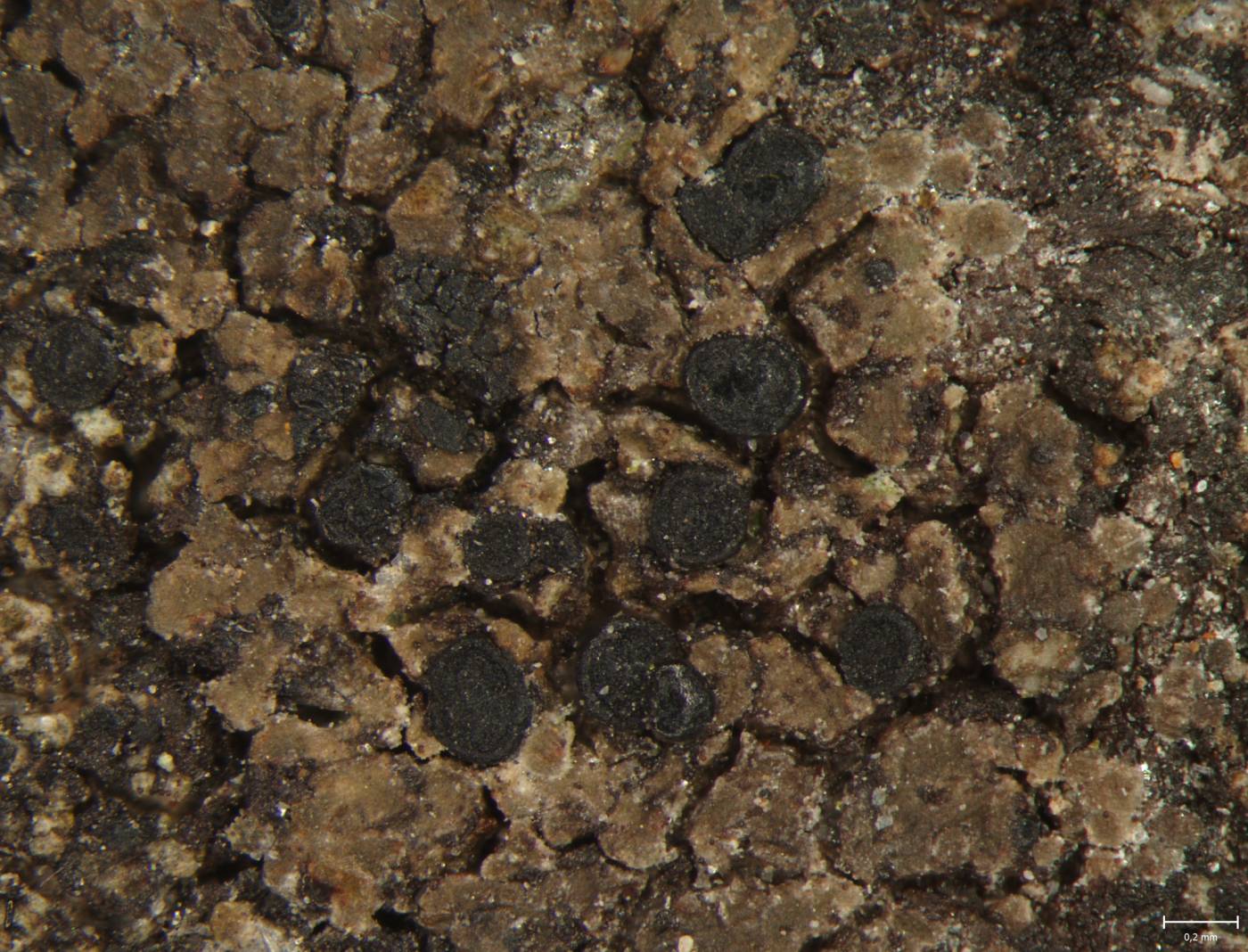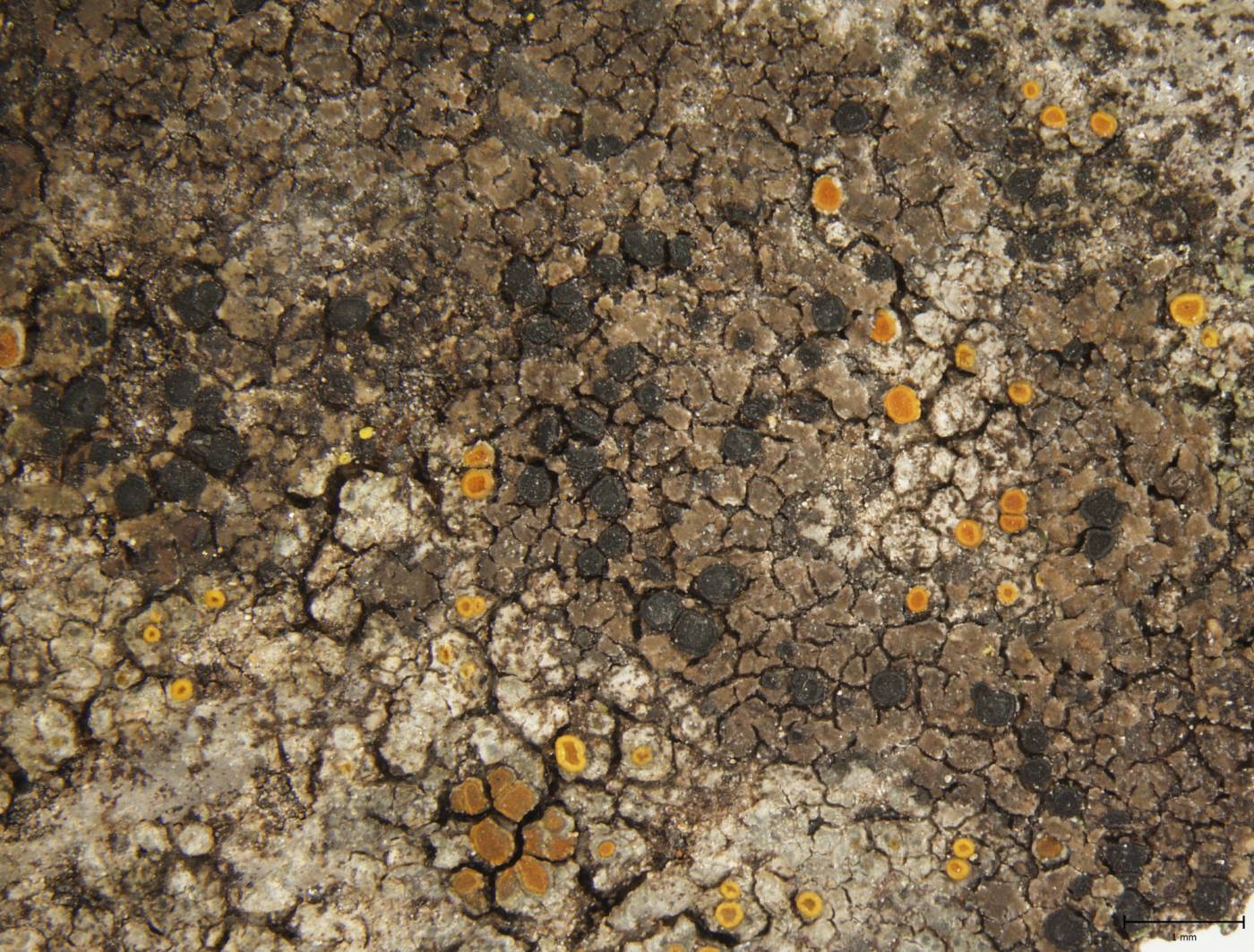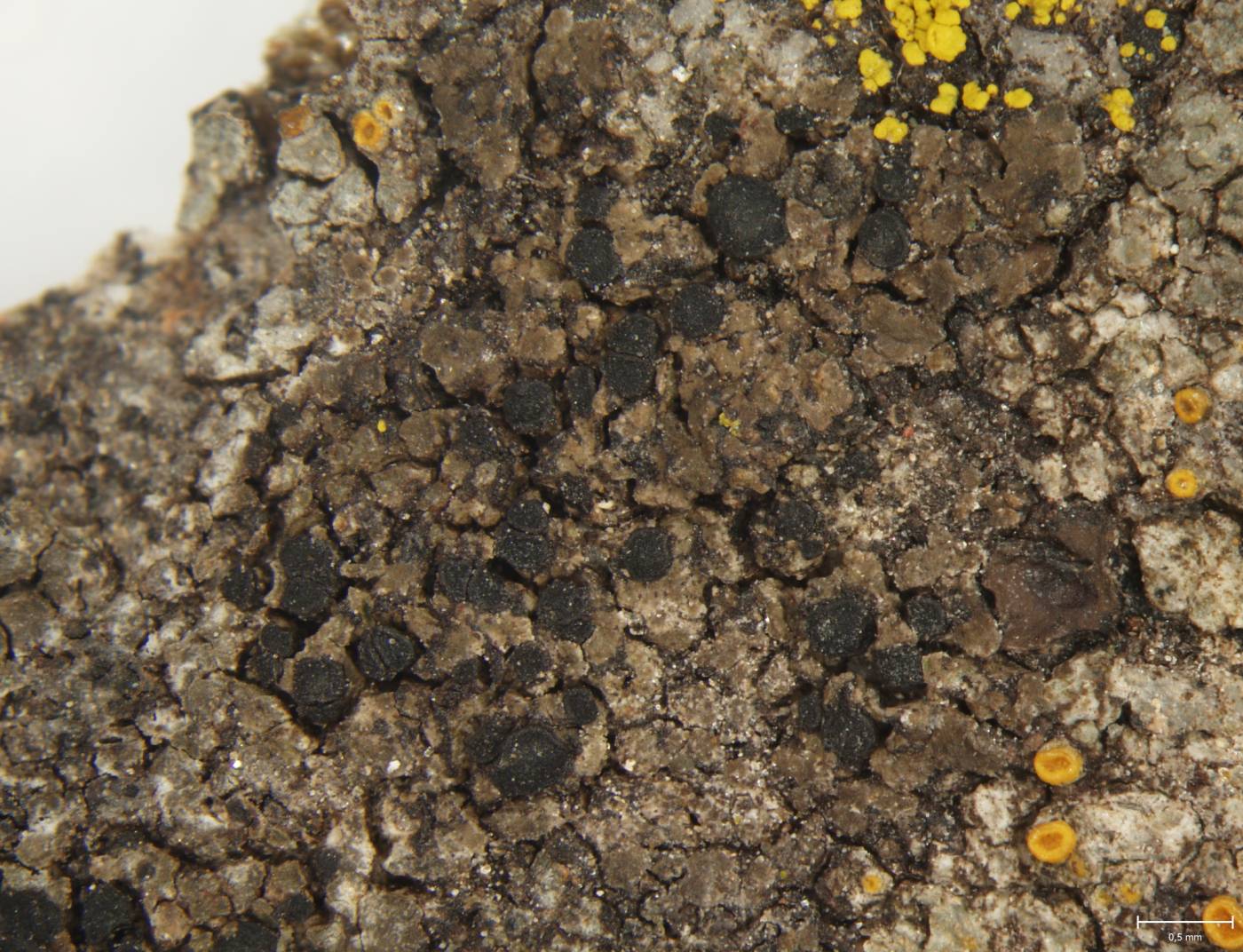This species does not contain any secondary metabolites detectable by TLC. Morphologically, it is somewhere in between*Amandinea punctata* and Buellia badia. Its thallus is relatively inconspicuous, grey to brown, and sometimes forms marginal lobes. According to DNA sequences, B. sandstedei * is close but clearly separated from *B. badia.
The lichen grows on sunny, mostly basic siliceous rocks and stones. It is apparently more frequent in xerothermic localities. Its overall distribution is unknown, probably for its rarity and possibly also overlooking. In the Czech Republic, the species was first found in 2020. So far it has been reported from the Křivoklát region, Vltava River valley and České středohoří Hills.
Literature: Vondrák J., Svoboda S., Malíček J., Palice Z., Kocourková J., Knudsen K., Mayrhofer H., Thüs H., Schultz M., Košnar J. & Hofmeister J. (2022): Cinderella became the princess: an exceptional hotspot of lichen diversity in a long-inhabited Central European landscape. – Preslia 94: 143–181.
taxonomic classification:Ascomycota → Lecanoromycetes → Caliciales → Caliciaceae → Buellia
Red List (Malíček 2023):DD – data deficient
Occurrence in the Czech Republic
All records: 6, confirmed 6. One click on a selected square displays particular record(s), including their source(s).


